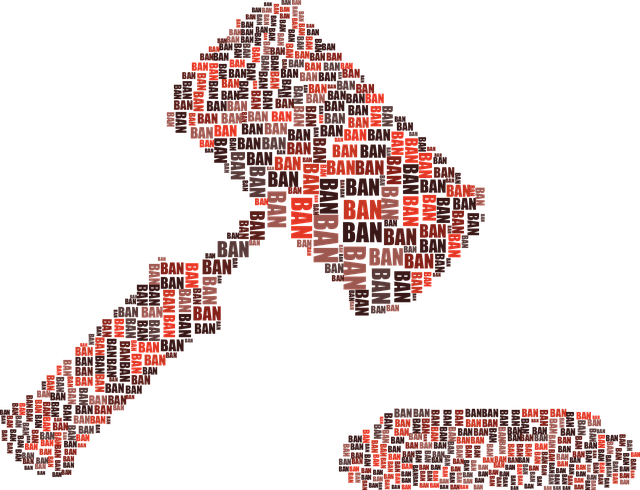The Spanish Criminal Procedure Act (in Spanish Ley de Enjuiciamiento Criminal, henceforth LECrim) is a law with more than a century, this feature is still reflected in a lot of its articles and procedures, when we currently read some of them they transport us to this not very far away past where the preoccupations of the legislator were the same which are now, but they were tackled in a different way. A good example, is the procedure for crimes committed by means of the press, the engraving or another mechanic means of publication, a procedure initially envisaged for the written press, although in the year 2002, when internet was spreading really fast, was reformed to be applicable to wider range of means of communication, by the Organic Law 8/2002 of 24 October (in Spanish Ley Orgánica 8/2002 de 24 de Octubre, henceforth Organic Law 8/2002).

– The procedure which complements the scarce dispositions of the procedure for the crimes committed be means of the press, the engraving or another mechanic means of publication:
This procedure is regulated through nine articles, therefore, in reality cannot be regarded as an authentic autonomous procedure, such articles has the aim of complementing other procedure with some particularities, which are thought for the cases in which a crime are committed using the media.
Usually, the procedure that will serve as base over which the particularities of this special procedure will be applied is the Abbreviated Procedure, although all will depend on whether the punishment for the crimes investigated is within the limits of the article 757 LECrim. This is the most important conclusion of the Consultation 2/1994, of 28 November, on the right procedure for the trying of the crimes of slander and calumny (henceforth the Consultation 2/1994), though it was envisaged to finish with the doubts which surrounded the special procedure for the crimes of slander and calumny, determining that the proper procedure for trying these crimes is the Abbreviated Procedure, it extended such idea to the procedure for the crimes committed by means of the press, the engraving or another mechanic means of publication.
None the less, as we have said above, all will depend on whether the punishment is within the limits of the article 757 LECrim, the Consultation 2/1994 conditions the application of the Abbreviated Procedure to the criteria of the gravity of the punishment. This leaves open the door, to the possibility of applying the Ordinary Procedure if the punishment is graver than what is established by the article 757 LECrim as the boundaries of the Abbreviated Procedure, or even, we can imagine a crimen committed be means of the media, which fulfills the requisites of the article 795 LECrim being applicable the Procedure for the fast trying of determined crimes.
Summing up, probably, the norms which will apply, when there exists a vacuum left by the lack of dispositions of the procedure for crimes committed by means of the press, the engraving or another mechanic means of publication, is the Abbreviated Procedure, and the Criminal Judge will be the judicial organ with competence for trying the crime (art. 14.3 LECrim). Both suppositions being conditioned, by the criteria of the gravity of the punishment above mentioned.
– The scope of the procedure for crimes committed by means of the press, the engraving or another mechanic means of publication:
This procedure has nos been envisaged for a specific kind of crimes, it is not like the procedure for the crimes of slander or calumny, only applicable to such crimes, or even the Procedure for the fast trying of determined crimes, which though applicable to the flagrant crimes or those whose investigation is supposedly easy, also has a closed list of crimes. The procedure for the crimes committed by means of the press, the engraving or another mechanic means of publication can be utilized to try all the crimes which are committed through the media, or more concretely, through any of the means mentioned in the article 816 or the article 823 bis, the latter introduced by the Organic Law 8/2002.
For example, we can mention some of these crimes classified in the Spanish Criminal Code (in Spanish Código Penal, henceforth CP), crimes against the intellectual or industrial property of third parties (article 270 and following of the CP), hate crimes (article 510 and following of the CP), the already mentioned crimes of slander and calumny (article 208 and article 205 of the CP), or the own provocation to the crime, which is punished in the cases expressly regulated by the CP (article 18 of the CP).

Thereby, the legal good protected by this special procedure is indeterminate, on the contrary, the rights which will always be in a conflict of interest with such protected legal good will be the same. We are referring to the right to freedom of expression and the right to freedom of information, protected as fundamental rights by the article 20 of the Spanish Constitution (in Spanish Constitución Española, henceforth CE). The right to freedom of expression is defined by the CE, as the right to: “Freely express and spread the thoughts, ideas, and opinions through the word, the writing, or any another means of reproduction”. Whereas the right to the freedom of information is, the right to: “Freely communicate or recibe truthful information by any means of diffusion”. Both rights in the majority of cases are jointly exercised, it is complicated to communicate wholly information being objective, since usually it will be tainted by the opinion of whom is communicating it. Nevertheless, in order to be protected by the right to freedom of information, such information has to be truthful, as we have just seen, and according the the Spanish jurisprudence: “<truthful> is either the attribution which corresponds to the reality, or the false, in an objective sense, which has been attributed as true after the duties of verification”.
– The commission of the crimes of slander and calumny by means of the press, the engraving or another mechanic means of publication:
Both crimes have an specific procedure, which is regulated in the Title IV of the Book IV, but when any of the means mentioned in the article 816 or the article 823 bis are utilized to commit the crimes of slander or calumny, the proper procedure for the trying of such crimes is the procedure for crimes committed by means of the press, the engraving or another mechanic means of publication.

Notwithstanding the above, the requisite of obtaining the certification of having been practiced by the prosecution the act of conciliation with the defendant, or at least, of having tried it without effect (art. 804 LECrim), is still mandatory. For it is a demand which is not only mentioned in the article 804 LECrim, previously it is mentioned in the article 278 LECrim for all those crimes which are private. This is not a contradiction with which is established in the article 816 or the article 823 bis, that envisage the intervention of the Examining Magistrate with the adoption of preventive measures which impede a greater damage to the supposed legal good damaged. The article 278 in its second paragraph establishes the possibility that the Examining Magistrate may adopt those urgent preliminary proceedings which has the goal either of arresting the criminal or finding out the crime. In these cases, when the lawsuit is not accompanied by the preceptive certification of having been practiced the act of conciliation or having tried it without effect, the admission of the lawsuit will be suspended, but the Examining Magistrate will be still able to adopt urgent preliminary proceedings, as the preventive seizure of copies or the prohibition of diffusing or screening. If afterwards the lack of the certification is not corrected, the lawsuit must be rejected since it is a requirement of procedure, on the contrary, if the certification is finally provided, the lawsuit must be admitted, taking into account that the rest of the requisites of the article 313 must be met too, the lawsuit must contain facts classified as crimes by the CP, in this case the crimes of slander and calumny, and the lawsuit must be brought at the Examining Magistrate with competence for investigating the crime, to which the Spanish jurisprudence has added that, the lawsuit must be accompanied by some proof in order to avoid prospective investigations altogether forbidden by Spanish law.
In order to determine the punishment, both the slander and the calumny are more severely punished when they are committed with publicity. The art. 211 of the CP gives us a definition of when we are in front of a slander or calumny with publicity: “The calumny or slander are done with publicity when they are spread by means of the press, the broadcasting or whatever another means of akin efficacy.”, and the article 206 of the CP, for the calumny, and the article 209 for the slander, specify what is the concrete punishment for these variants of both crimes.
Therefore, we have to conclude that, the following of the rules established for the procedure for crimes committed by means of the press, the engraving or another mechanic means of publication, will determine a greater punishment of the slander or calumny.
– The article 816 and article 823 bis of the LECrim:
We have already seen that, it is not necessary the admission of the lawsuit by the Examining Magistrate, for the application of any of the preventive measures which are mentioned in them. But we have to deepen more into this character of preventive measure, what are the requisites which have to be fulfilled?

As all the preventive measures, their application presupposes an affectation to the right to the presumption of innocence of whom suffers it, perhaps he has not been convicted yet, but he is already suffering the consequences. For avoid, thus, that the adoption of such preventive measures may affect legal goods worthy of protection too, the Spanish jurisprudence has developed some requisites which must be fulfilled previous to their adoption:
a) Appearance of good law (fumus boni iuris): it implies the necessity of formulating a probabilistic reasoning regarding the intervention of the investigated in the facts which will be tried, thereby, due to the relevance of the preventive measures which will be adopted against the person investigated, its rights must not be restrained without a high probability of its conviction.
b) Risk for delay (periculum in mora): it supposes a risk of damaging a legal good derived from a delay in the proceedings of the criminal procedure, since the delay until the oral trial and a firm sentence may frustrate the finality of it.
c) The fulfillment of the principle of proportionality: it has three conditions: the measure has to be suitable to fulfill its objetive (suitability judgment); the measure has to be necessary, there cannot be another measure more lenient for the fulfillment of the objective with the same efficacy (necessity judgment); and, finally, the measure has to be equilibrated and balanced, from it must derive more benefits or advantages for the general interest than prejudices upon other goods or values in conflict (judgment of proportionality in strict sense).
Víctor López Camacho.
If you liked follow me on Twitter: @victorsuperlope.
More on my website: www.victorlopezcamacho.com

Un comentario